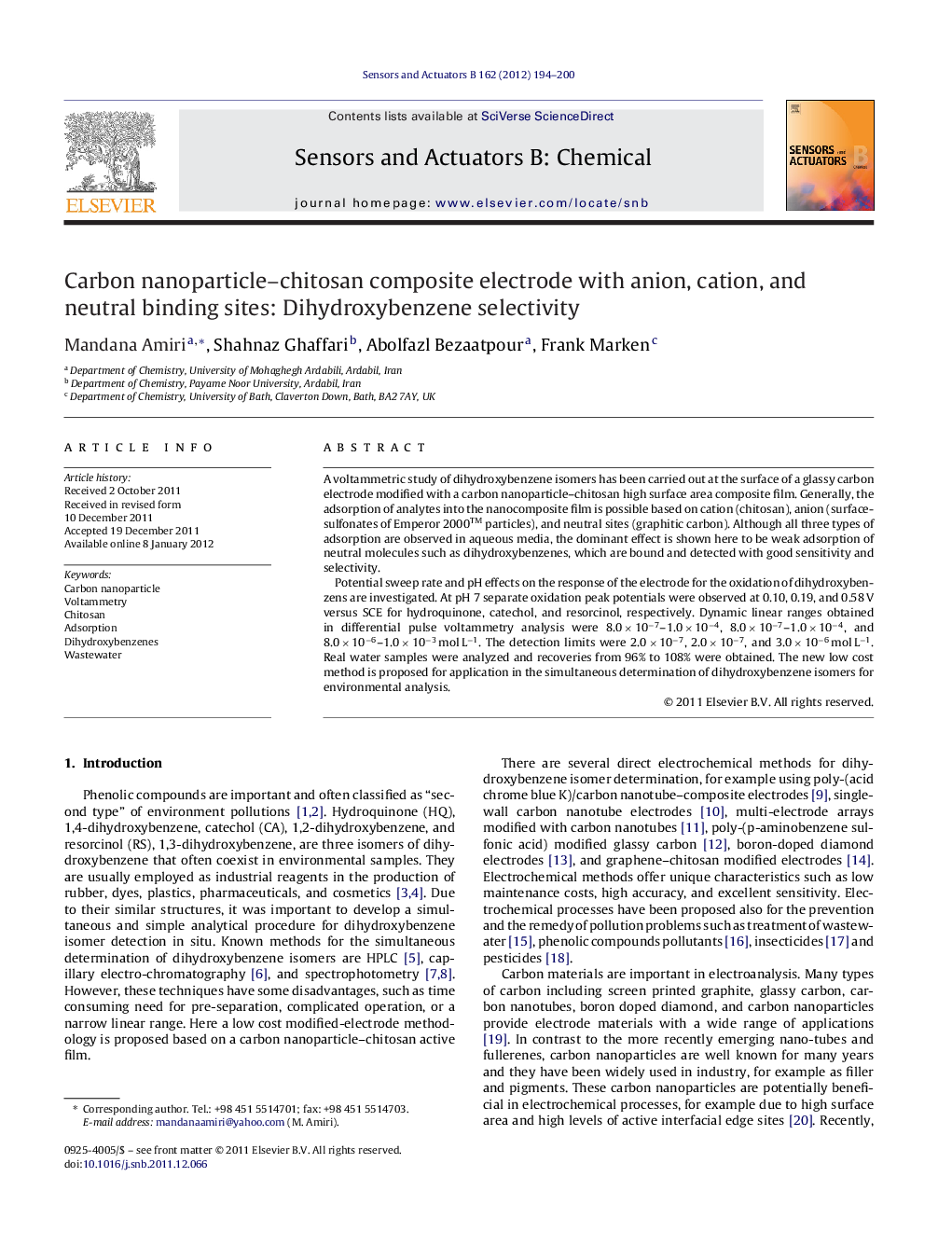| کد مقاله | کد نشریه | سال انتشار | مقاله انگلیسی | نسخه تمام متن |
|---|---|---|---|---|
| 740693 | 894181 | 2012 | 7 صفحه PDF | دانلود رایگان |

A voltammetric study of dihydroxybenzene isomers has been carried out at the surface of a glassy carbon electrode modified with a carbon nanoparticle–chitosan high surface area composite film. Generally, the adsorption of analytes into the nanocomposite film is possible based on cation (chitosan), anion (surface-sulfonates of Emperor 2000™ particles), and neutral sites (graphitic carbon). Although all three types of adsorption are observed in aqueous media, the dominant effect is shown here to be weak adsorption of neutral molecules such as dihydroxybenzenes, which are bound and detected with good sensitivity and selectivity.Potential sweep rate and pH effects on the response of the electrode for the oxidation of dihydroxybenzens are investigated. At pH 7 separate oxidation peak potentials were observed at 0.10, 0.19, and 0.58 V versus SCE for hydroquinone, catechol, and resorcinol, respectively. Dynamic linear ranges obtained in differential pulse voltammetry analysis were 8.0 × 10−7–1.0 × 10−4, 8.0 × 10−7–1.0 × 10−4, and 8.0 × 10−6–1.0 × 10−3 mol L−1. The detection limits were 2.0 × 10−7, 2.0 × 10−7, and 3.0 × 10−6 mol L−1. Real water samples were analyzed and recoveries from 96% to 108% were obtained. The new low cost method is proposed for application in the simultaneous determination of dihydroxybenzene isomers for environmental analysis.
Journal: Sensors and Actuators B: Chemical - Volume 162, Issue 1, 20 February 2012, Pages 194–200